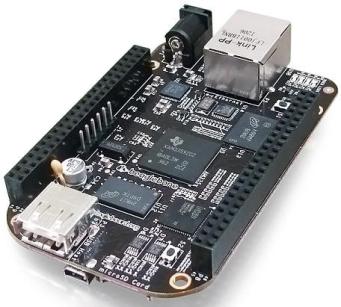Pradeep Singh | 8th May 2016
Hardware Platforms are the integral part of IoT Applications. With the help of these devices you can quickly build your DIY project or prototype. Here are some of the popular Hardware Platforms used in IoT projects –
1. Raspberry Pi:

The Raspberry Pi is a Single Board Computer developed by Raspberry Pi Foundation. It is widely popular as a small, inexpensive computing board among experimenters, hobbyists, educators and technology enthusiasts.
2. Arduino (Genuino):

Arduino is an open-source prototyping platform based on easy-to-use hardware and software. Arduino boards are able to read inputs – light on a sensor, a finger on a button, or a Twitter message – and turn it into an output – activating a motor, turning on an LED, publishing something online.
3. ESP8266:

The ESP8266 integrates a 160 MHz microcontroller with a full Wi-Fi front-end (both as client and access point) and TCP/IP stack with DNS. ESP8266’s flexibility and price point have driven its explosion of use. It is produced by Shanghai-based Chinese manufacturer, Espressif. The chip became popular for IoT with the ESP-01 module, made by a third-party manufacturer, AI-Thinker.
4. Intel Edison:

Intel Edison is a tiny development platform featuring a Intel Atom CPU and 32 bit Intel Quark microcontroller. This tiny board carries all Wi-Fi and bluetooth modules for connectivity and thus requires no external modules to do so. Also it carries other striking features such as UART, SPI, I2C, I2S, GPIO and SD card support.
5. Intel Galileo:

Galileo is a microcontroller board based on the Intel® Quark SoC X1000 Application Processor, a 32-bit Intel Pentium-class system on a chip (datasheet). It’s the first board based on Intel® architecture designed to be hardware and software pin-compatible with Arduino shields designed for the Uno R3.
6. BeagleBone (BeagleBoard):

Putting Android, Ubuntu and other Linux flavors at your fingertips, the Beagle family revs as high as 1GHz with flexible peripheral interfaces and a proven ecosystem of feature-rich “Cape” plug-in boards. The Beagles are tiny open-hardware (you could make one yourself), open-software computers that plug into whatever you have around the house.
7. Banana Pi:

Banana Pi is a single-board computer. Banana Pi targets to be a cheap, small and flexible enough computer for daily life. Built with ARM Cortex-A7 Dual-core CPU and Mali400MP2 GPU, and open source software, Banana Pi can serve as a platform to make lots of applications for different purposes.
8. NodeMCU Dev Kit:

NodeMCU Development Kit is based on ESP8266 WiFi Chip, it integrates GPIO, PWM, IIC, 1-Wire and ADC all in one board. You can top it up with NodeMCU firmware to speedup your development process.
9. Flutter:

Flutter features a fast ARM processor, powerful long-range wireless communication, built-in battery charging, and an onboard security chip, making Flutter an ideal choice for robotics, wireless sensor networks, consumer electronics, and educational platforms.
10. CHIP:

CHIP is making news for it’s low cost ($9) and high value features. It is fully loaded with built-in WiFi b/g/n, 1GHz Processor, 4GB onboard storage, 512MB RAM, and Bluetooth 4.0.
